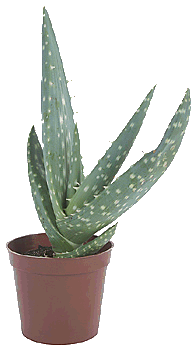How to Prevent and Treat Sunburn
by www.SixWise.com
It used to be that sunburns were as much a part of summer
as picnics and pool parties. Today, we know that too much
sun -- i.e. when your skin gets red and feels hot to the touch
-- can, over time, result in dry, wrinkled skin, liver spots,
and even skin cancer.
|

Experts say 15-20 minutes of sunlight a day is an ideal
amount for a light-skinned person to produce health-promoting
vitamin D. Darker skinned people need a bit longer.
|
At the very least, sunburn is painful and can lead to headache,
fever and fatigue. Preventing sunburn is important to protect
your skin and your future health -- and to really enjoy your
summer.
How Much Sun is Too Much?
Getting some sun, experts now conclude, is indeed essential
to health. Most importantly, safe sun exposure allows your
body to produce vitamin D, which is often referred to as the
"sunshine drug."
"Enzymes in our skin make vitamin D when skin is exposed
to sunlight," says Dr. Julia Knight, a researcher at
Mount Sinai Hospital in Toronto.
Maintaining healthy vitamin D levels is known to protect
against cancer, strengthen your bones, and, according to the
Vitamin D Council, plays a positive role in the following
conditions:
-
Heart disease, stroke and hypertension
-
Autoimmune diseases
-
Diabetes
-
Depression
-
Chronic pain, muscle weakness and muscle wasting
-
Osteoarthritis and osteoporosis
-
Birth defects
-
Periodontal disease
Sun exposure is an easy, not to mention inexpensive way to
get plenty of vitamin D, so experts now recommend spending
a bit of time in the sun to maintain your levels.
"You don't need much sun for your body to reach its
maximum level of vitamin D," Knight says. "In the
summer, a lighter-skinned person would reach their maximum
level in about 15 minutes. People with darker skin would need
a bit more time."
So while a short stay in the sun is healthy, too much longer
can be harmful. You know you've been in the sun too long if
your skin looks pink or red, feels hot to the touch, or is
painful. Once you feel this, however, it's likely too late.
|

Aloe vera is an incredibly soothing salve for burns
of all kinds (including sunburn). Just break off a leaf
and apply the gel inside to the burn.
|
How to Prevent Sunburn
Most sunburn symptoms don't show until a few hours after
exposure, but the full extent of the burn may not appear for
a day or more. So it makes sense to be careful when you're
in the sun to avoid getting burned in the first place.
-
Don't stay out long between 10 a.m. and 4 p.m.
This is when the sun's rays are the strongest. If you're
outdoors during this time, keep in mind that you'll burn
faster than at other times of the day.
-
Wear protective clothing. If you've been out in
the sun for a while and want to cover up, use clothing
such as cover-ups, long loose-fitting pants and tops,
and wide-brimmed hats. Opt for lightweight fabrics that
are cool, but will still give you sun protection. And
don't forget your sunglasses (your eyes can get sunburned
too).
-
Try natural sunblock. Sunblock will protect your
skin from the sun's rays, but be aware that many contain
questionable
chemicals that are not usually regulated. Opt for
natural varieties from your health food store, and be
sure to reapply the sunblock if you have been in the water
or have been sweating.
-
Get some shade. A simple way to avoid sunburn
is to go in a shaded area to get out of the sun. If a
shaded area (such as under a tree) is not available, use
an umbrella.
How to Soothe Sunburn
If your preventative measures have failed and you've gotten
sunburned, here are some simple tips to soothe the pain and
swelling:
-
Cool the area. Dampen a washcloth with cool water and
apply it to the area, or take
a cool bath or shower. Adding some baking soda to
your bathwater can help to soothe your skin.
-
Keep your skin moisturized. A gentle, non-irritating
moisturizer such as Surgeon's
Skin Secret Moisturizing Sticks can help relieve the
dryness and tightness that accompanies sunburn.
-
Soothe your skin. Aloe vera gel is an excellent soothing
salve, particularly if you have access to a living plant.
Simply break off a leaf and apply the gel inside to the
burn. Witch
hazel also works well to relieve sunburn pain.
-
Drink plenty of water. Sunburn can be dehydrating, causing
fluid loss through your skin. Drinking water is essential
to healing sunburn.
-
Leave blisters alone, if they form. The fluid inside
acts as a protective agent for your skin. Breaking the
blisters will slow healing and increase the risk of infection.
-
Avoid topical "-caine" products. Over-the-counter
creams that end in "caine" (such as benzocaine)
are sometimes advertised to relieve sunburn. However,
according to the Mayo Clinic they can actually irritate
the skin or cause an allergic reaction.
Finally, if you are sunburned treat it as any other illness.
Your body will need time to recover, so put on some comfortable,
loose-fitting clothing, rest, and eat and drink healthy foods
to give your body all the support it needs to heal.
Recommended Reading
If
You are Often Itchy, Beware: The Itch May be More Than Skin
Deep
Rip
Currents & Other Hidden Hazards Everyone Who Swims and
Plays in Oceans or Lakes Needs to Know
Sources
Vitamin
D Council
Canadian
Living
MayoClinic.com